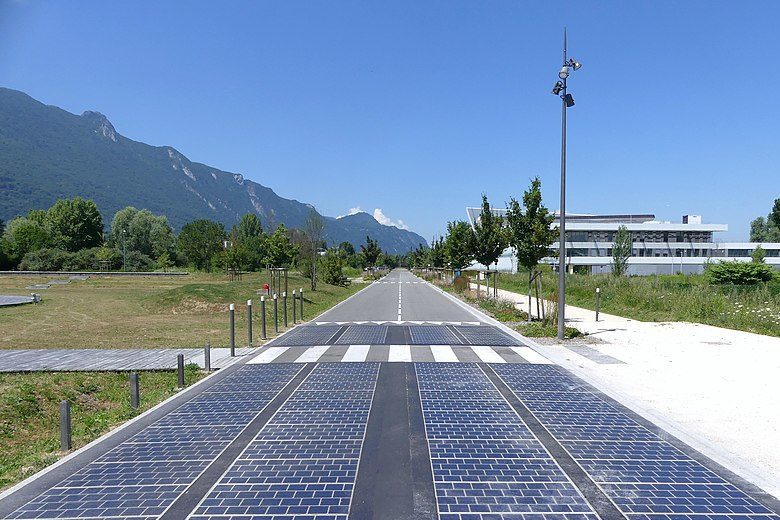
Solar Roadways Fail Despite High Investments
We are reader-supported. When you buy through links on our site, we may earn affiliate commission.
The solar energy industry has increased exponentially, with a 48% annual growth rate in the last decade. As a market with such high potential, engineers rushed to discover more innovative ways to utilize this technology.
When experts first proposed the concept of solar roadways, it seemed like a great idea. With access to so much existing infrastructure, adding solar panels to roads appeared like an easy solution. Photovoltaic roadways garnered interest as an advanced way to harvest energy off of impermeable surfaces. Unfortunately, the concept was misguided and proved to be entirely ineffective. Not only did the solar panels produce less than half of the energy proposed, but developers also found that the large-scale installations were incredibly impractical financially.
The first solar roadway project in France, called Wattway, was a complete failure and was rendered unusable in less than two years. Around the world, implemented trial projects also experienced issues. Despite the high investments made, solar roadways fail. Why?
Ineffective Energy Source
While roads cover a significant extent of the earth’s surface, they are not at an angle to capture the sun’s energy. Because of this, solar panels placed on them are incredibly inefficient in generating electricity. When utilized correctly, solar can only convert 20% of the sun’s energy into electricity, and this number significantly diminishes when the panels are angled ineffectively. Additionally, unlike solar panels placed on roofs or other locations, photovoltaic roadways are subject to near-constant impact, dirt and other elements that obscure visibility. The general wear and tear on a road are not conducive to effective solar generation. Panels on roads may also be subject to a variety of weather conditions, making it difficult to predict their supply.
Efficiency is of utmost concern when it comes to utilizing renewable energy sources. Solar energy has the potential to be an extremely efficient source of energy and a practical alternative to fossil fuels, but only if harnessed correctly. Current technology does not allow for solar panels on roads to adequately supply and store energy, making them a hard sell in the energy market.
Lack of Durability
While an engineering solution may exist in the future, no current technology CAN manufacture a material that is durable enough to withstand long-term impact while also gathering solar energy. The Wattway project in France fell to pieces after being touted as a solution for the next decade. This situation is due in part to the maintenance required to keep solar roadways operable. In addition to a costly and labor-intensive installation process, the upkeep involved in solar roadways is extensive. Most operations use tempered glass, and one small crack can render the entire panel ineffective.
Similarly, the electrical mechanisms within the panel can require costly repair. If a highway is composed of solar panels and one needs replacing, it can cause significant disruption for even a small fix. This lack of longevity in materials makes it challenging to promote the so-called “innovative” technology. While electrical engineers continue to work to make solar panels more affordable, the current models don’t work for otherwise impermeable surfaces.
Cost-Prohibitive
The most significant issue with solar roadways is the cost. To implement at a level large enough to make a profit, the cost of installation is well over any country’s federal budget. A U.S.-based project in 2016 cost more than $6 million and was declared inoperable shortly after installation. For solar roadways to be a useful source of energy, countries would need to install them over thousands of miles. Unfortunately, the cost is significantly higher than the potential energy generated.
Installation is only one part of the equation. As was mentioned above, current technology has not found a solution to make solar panels more durable. This lack of longevity translates into high maintenance costs, both in labor and materials. Overall, the manufacturing and installation of solar roadways make no sense economically, at least with the technology available today.
Driving on the Sunnyside
Experts proposed solar roadways as a revolutionary technology that would transform the way we generate electricity. While future advances may make this statement true, as of today, solar roads are an ineffective form of energy creation. Not only are they costly to install and difficult to maintain, but they’re also incapable of capturing optimum levels of power. With continued innovations in the renewable energy market, solar roads may one day replace the asphalt pavement of today.
Engineers are finding more success with solar bike lanes and solar-charged traffic lights, and this advancement may one day expand into future highways. As society looks for ways to improve infrastructure and incorporate renewable energy, solar roadways might become the standard. One day, photovoltaic road panels may be achievable. Unforeseen innovation and technological developments may be able to create a cost-effective and durable panel that produces efficient energy. However, solar roadways today, despite high investments, are ineffective.
Share on
Like what you read? Join other Environment.co readers!
Get the latest updates on our planet by subscribing to the Environment.co newsletter!
About the author
Jane Marsh
Starting from an early age, Jane Marsh loved all animals and became a budding environmentalist. Now, Jane works as the Editor-in-Chief of Environment.co where she covers topics related to climate policy, renewable energy, the food industry, and more.





